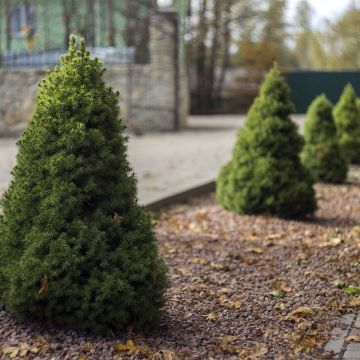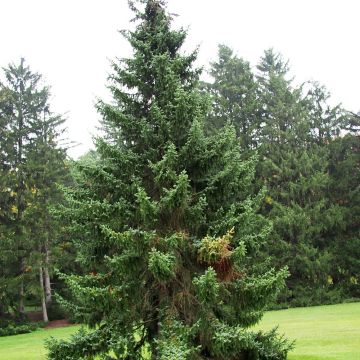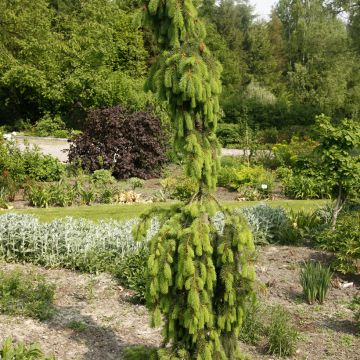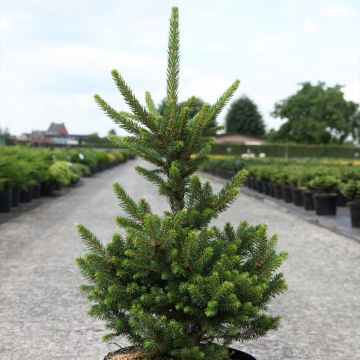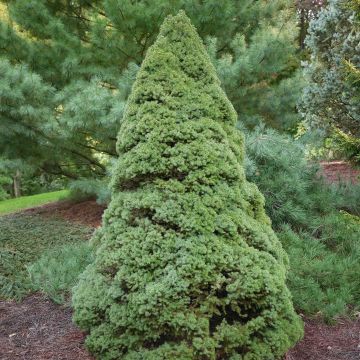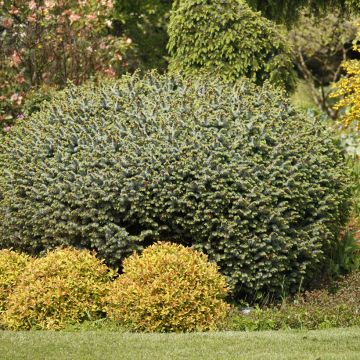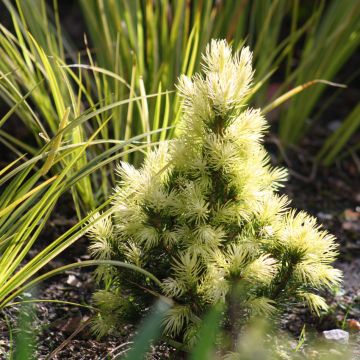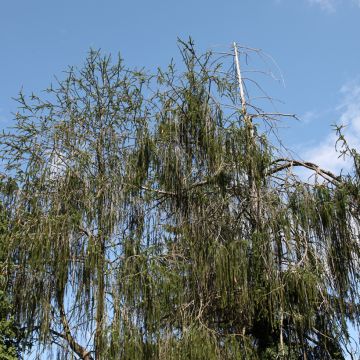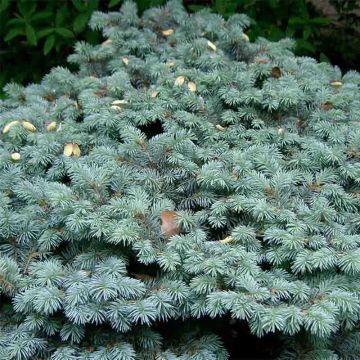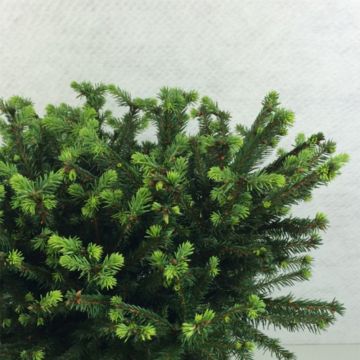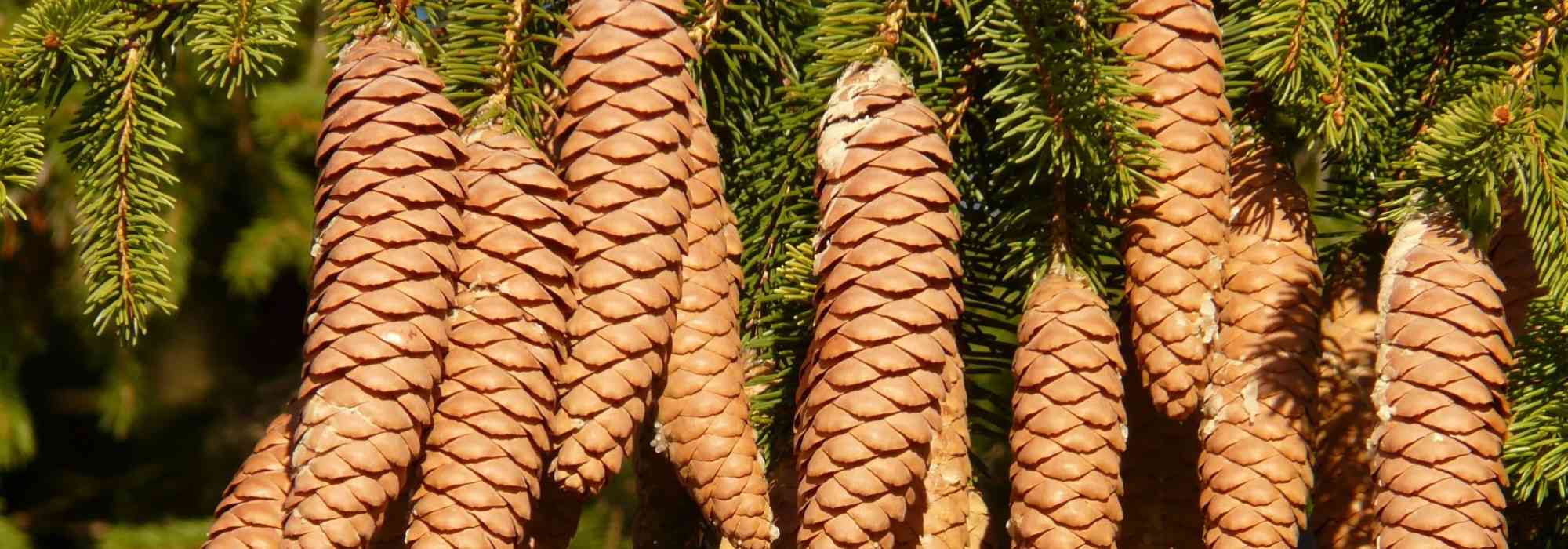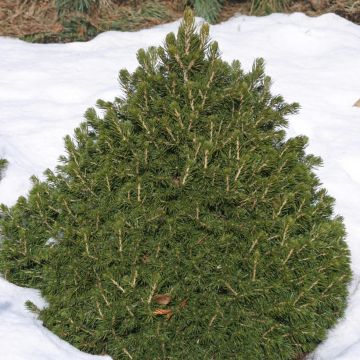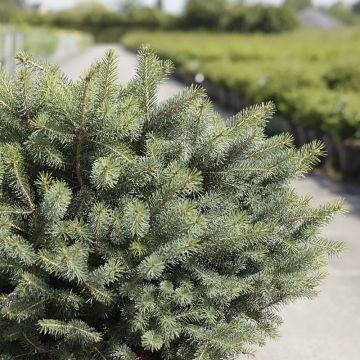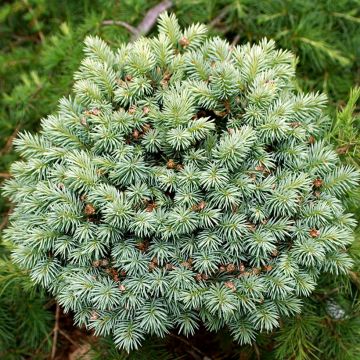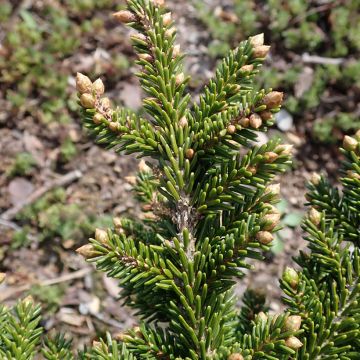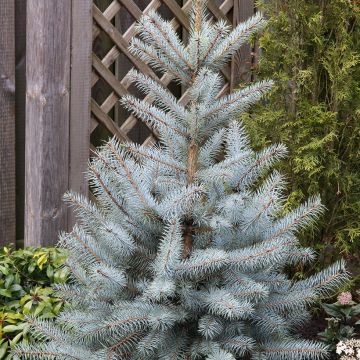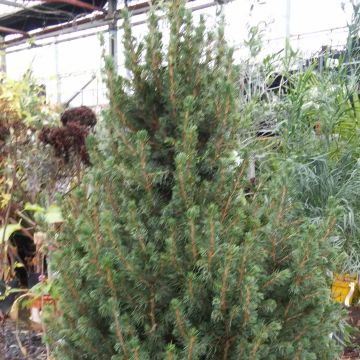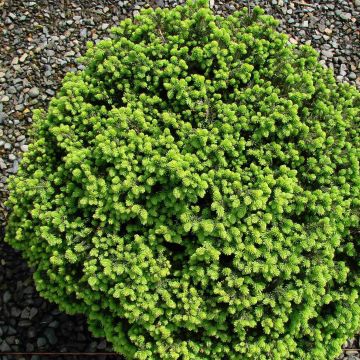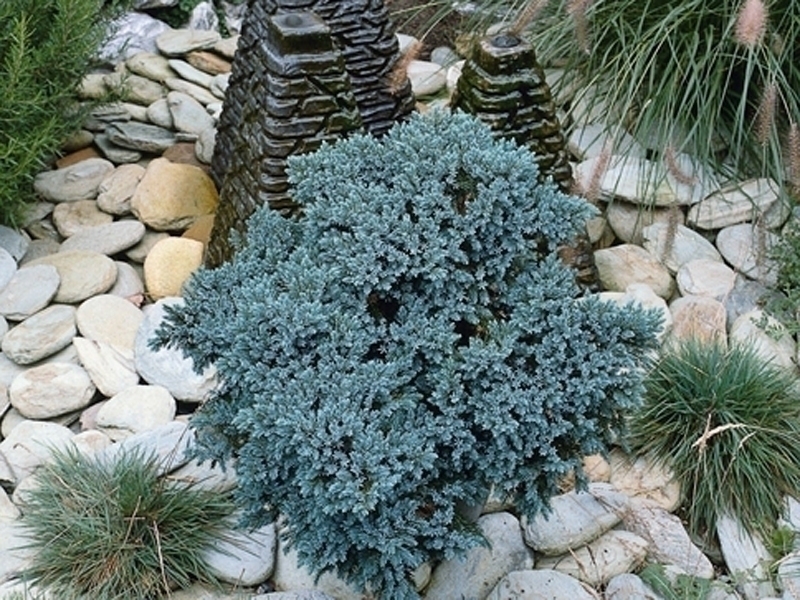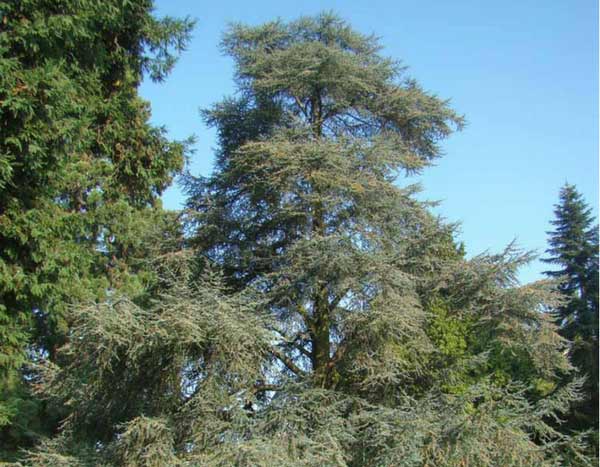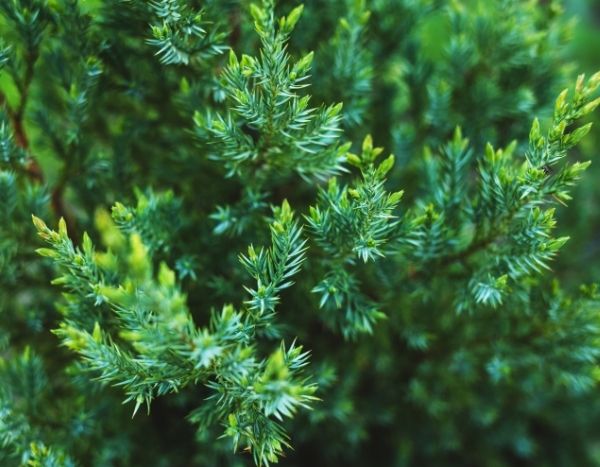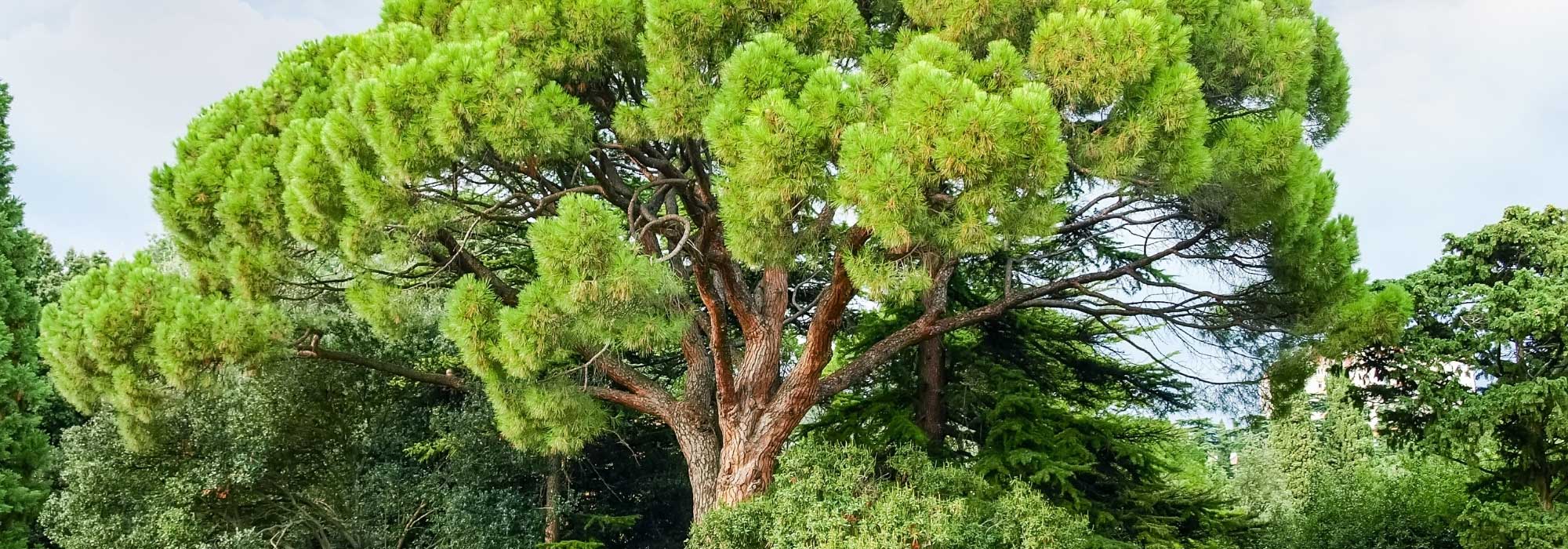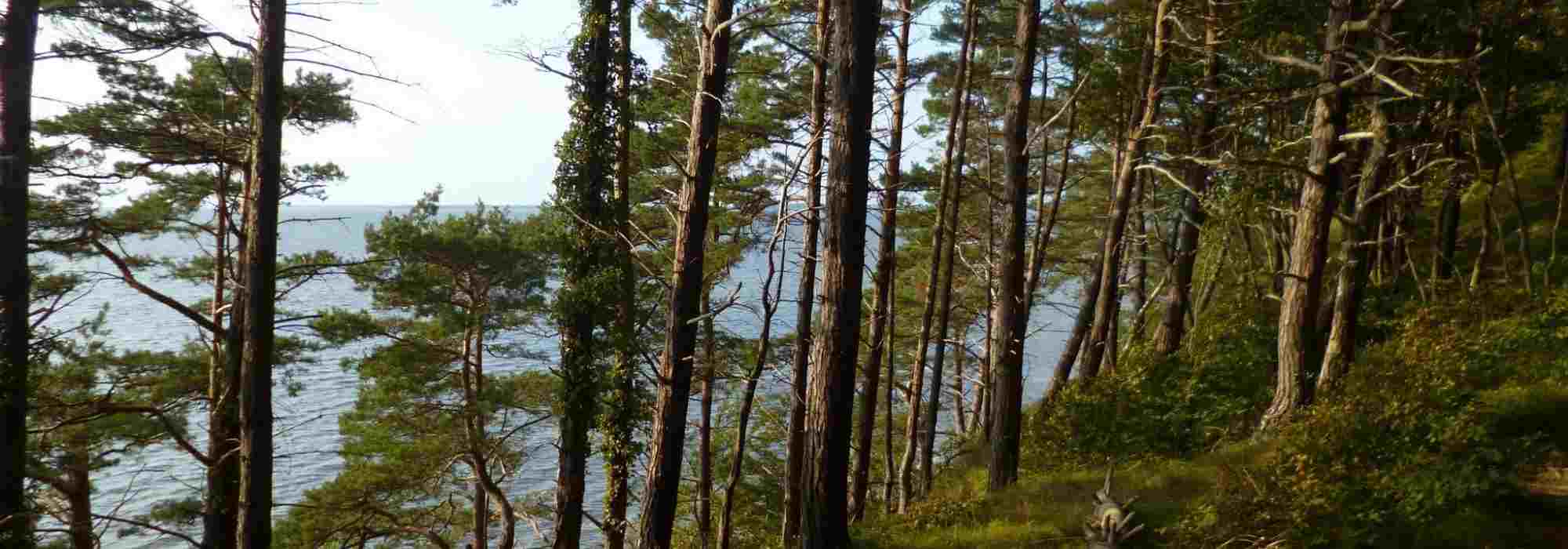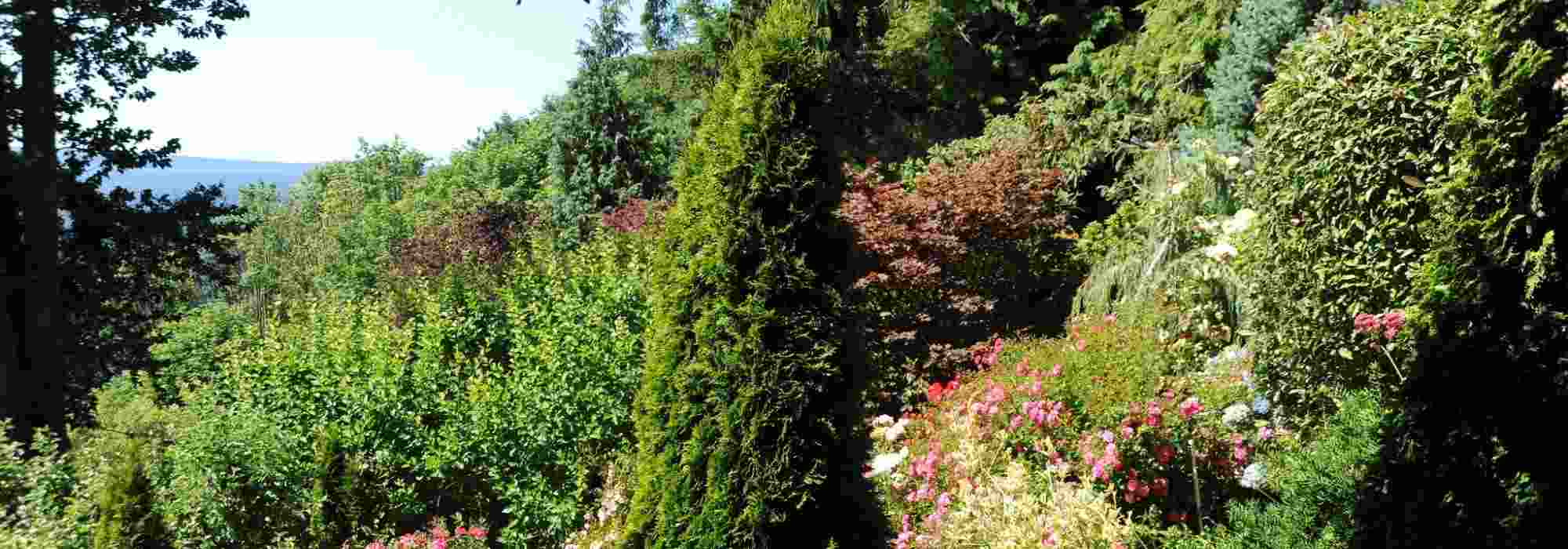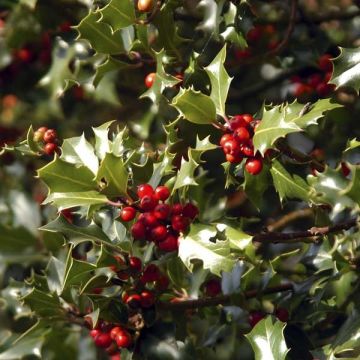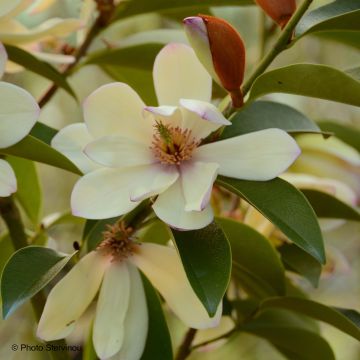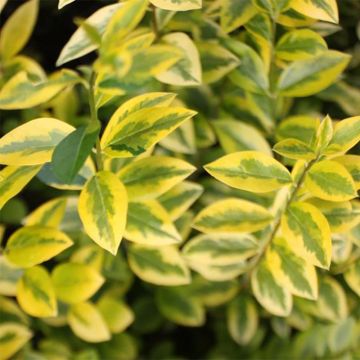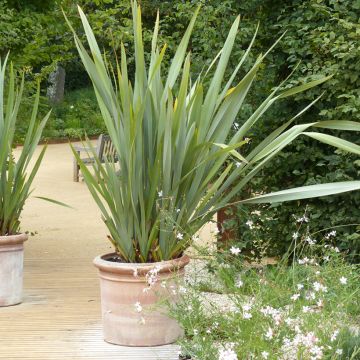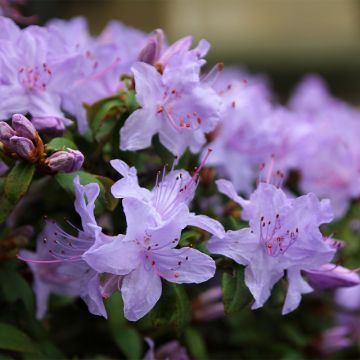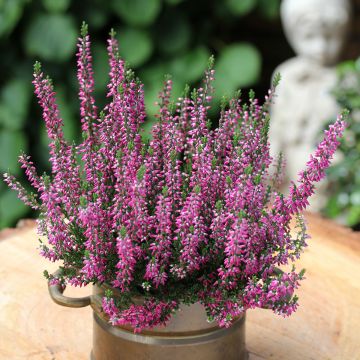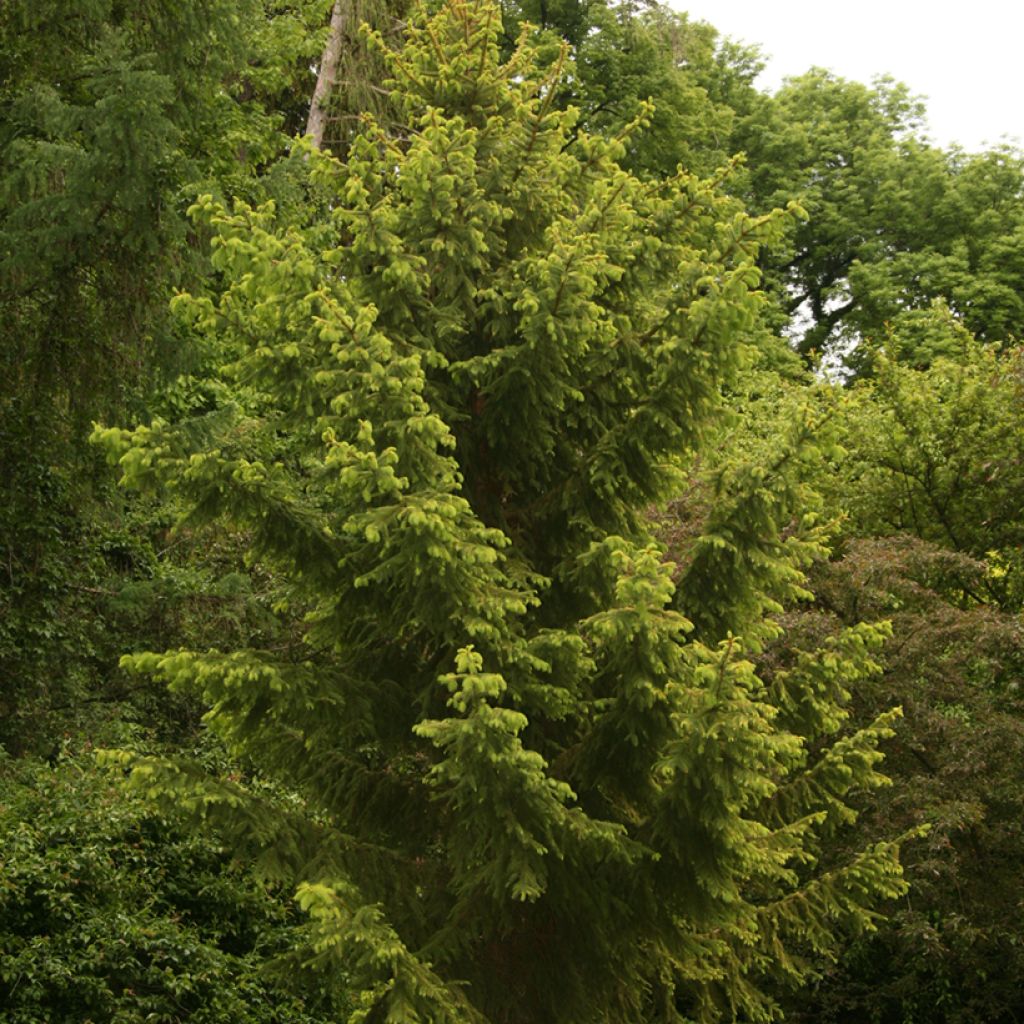

Picea abies Aurea Magnifica - Norway spruce
Picea abies Aurea Magnifica - Norway spruce
Picea abies Aurea Magnifica
Norway Spruce, European Spruce
Special offer!
Receive a €20 voucher for any order over €90 (excluding delivery costs, credit notes, and plastic-free options)!
1- Add your favorite plants to your cart.
2- Once you have reached €90, confirm your order (you can even choose the delivery date!).
3- As soon as your order is shipped, you will receive an email containing your voucher code, valid for 3 months (90 days).
Your voucher is unique and can only be used once, for any order with a minimum value of €20, excluding delivery costs.
Can be combined with other current offers, non-divisible and non-refundable.
Why not try an alternative variety in stock?
View all →This plant carries a 24 months recovery warranty
More information
We guarantee the quality of our plants for a full growing cycle, and will replace at our expense any plant that fails to recover under normal climatic and planting conditions.
Would this plant suit my garden?
Set up your Plantfit profile →
Description
Picea abies 'Aurea Magnifica' is a cultivar of Norway Spruce with beautiful golden foliage in winter, turning slightly greener in summer. This spruce is a medium-sized conifer with a pyramidal habit and ascending branches, exuding undeniable elegance. Its luminosity will be appreciated in a park or large garden, especially when planted alongside other evergreens with dark green foliage.
Picea 'Aurea Magnifica' is sometimes sold under the names Picea abies var. magnifica or Picea excelsa var. magnifica. This variety is a witches' broom discovered on a classic spruce by Ottolander and Hooftman Nursery in Boskoop, Netherlands, around 1900. The species, Picea abies, also known as Norway Spruce or Red Fir, is an evergreen conifer belonging to the Pinaceae family. It is native to Northern Europe, specifically Scandinavia. In its natural environment, it has a typically conical and pyramidal habit and can reach 30 m in height. This plant is traditionally used as a Christmas tree in Europe. It prefers well-drained, moist soils and is unfazed by very low temperatures. The 'Aurea Magnifica' cultivar forms a tree of around 10 m in height with a 4 m spread after 15 years. Its growth rate is about 30 cm per year initially, slowing with age. Eventually, it can reach 12 to 15 m in height and 5 m in spread at the base, depending on growing conditions. A mature specimen displays a beautiful pyramidal silhouette supported by thick branches bearing ascending shoots. The small evergreen leaves are stiff, 2 cm long, thick, and very sharp needles arranged radially around the shoots. They are golden-yellow in winter and early spring, then take on a lighter green tint in summer. The colour is more intense in spring and on young trees. The insignificant flowering appears on mature specimens, giving way to ovoid fruits called cones. The aged bark features deep, vertical, sometimes spiralled furrows, turning from grey to brown over time. The spruce's root system is shallow and running, making mature trees difficult to transplant and particularly vulnerable to wind.
Picea abies 'Aurea Magnifica' is best used as a specimen tree in a garden spacious enough to accommodate it. Its golden silhouette will stand out as a solitary feature on a lawn, or within a grove of other conifers with dark or blue foliage, such as a 'Fastigiata Robusta' yew, a Lawson's cypress 'Columnaris', or a blue spruce 'Blue Mountain'. The architectural qualities of conifers naturally lend themselves to contemporary garden design, which emphasises shapes, silhouettes, and textures. They pair well with mahonias and heathers, whose temperaments are highly complementary. The key is to play with volumes, habits, and colours.
Plant habit
Flowering
Foliage
Botanical data
Picea
abies
Aurea Magnifica
Pinaceae
Norway Spruce, European Spruce
Picea abies var. magnifica
Cultivar or hybrid
Other Picea
View all →Planting and care
Plant Picea abies 'Aurea Magnifica' from September to November and from February to June in deep, well-drained, light soil that does not dry out too much in summer. Choose a sunny spot sheltered from prevailing winds. Soak the root balls thoroughly before planting. Add organic matter at planting and water generously for the first few years, as well as during prolonged dry spells. Apply a special conifer fertiliser every year in April and hoe the soil in summer. This extremely hardy conifer dislikes heavy, waterlogged soil in winter. It cannot tolerate extreme heat and does not fare well in Mediterranean summers.
Planting period
Intended location
Care
Planting & care advice
This item has not been reviewed yet - be the first to leave a review about it.
Similar products
Haven't found what you were looking for?
Hardiness is the lowest winter temperature a plant can endure without suffering serious damage or even dying. However, hardiness is affected by location (a sheltered area, such as a patio), protection (winter cover) and soil type (hardiness is improved by well-drained soil).

Photo Sharing Terms & Conditions
In order to encourage gardeners to interact and share their experiences, Promesse de fleurs offers various media enabling content to be uploaded onto its Site - in particular via the ‘Photo sharing’ module.
The User agrees to refrain from:
- Posting any content that is illegal, prejudicial, insulting, racist, inciteful to hatred, revisionist, contrary to public decency, that infringes on privacy or on the privacy rights of third parties, in particular the publicity rights of persons and goods, intellectual property rights, or the right to privacy.
- Submitting content on behalf of a third party;
- Impersonate the identity of a third party and/or publish any personal information about a third party;
In general, the User undertakes to refrain from any unethical behaviour.
All Content (in particular text, comments, files, images, photos, videos, creative works, etc.), which may be subject to property or intellectual property rights, image or other private rights, shall remain the property of the User, subject to the limited rights granted by the terms of the licence granted by Promesse de fleurs as stated below. Users are at liberty to publish or not to publish such Content on the Site, notably via the ‘Photo Sharing’ facility, and accept that this Content shall be made public and freely accessible, notably on the Internet.
Users further acknowledge, undertake to have ,and guarantee that they hold all necessary rights and permissions to publish such material on the Site, in particular with regard to the legislation in force pertaining to any privacy, property, intellectual property, image, or contractual rights, or rights of any other nature. By publishing such Content on the Site, Users acknowledge accepting full liability as publishers of the Content within the meaning of the law, and grant Promesse de fleurs, free of charge, an inclusive, worldwide licence for the said Content for the entire duration of its publication, including all reproduction, representation, up/downloading, displaying, performing, transmission, and storage rights.
Users also grant permission for their name to be linked to the Content and accept that this link may not always be made available.
By engaging in posting material, Users consent to their Content becoming automatically accessible on the Internet, in particular on other sites and/or blogs and/or web pages of the Promesse de fleurs site, including in particular social pages and the Promesse de fleurs catalogue.
Users may secure the removal of entrusted content free of charge by issuing a simple request via our contact form.
The flowering period indicated on our website applies to countries and regions located in USDA zone 8 (France, the United Kingdom, Ireland, the Netherlands, etc.)
It will vary according to where you live:
- In zones 9 to 10 (Italy, Spain, Greece, etc.), flowering will occur about 2 to 4 weeks earlier.
- In zones 6 to 7 (Germany, Poland, Slovenia, and lower mountainous regions), flowering will be delayed by 2 to 3 weeks.
- In zone 5 (Central Europe, Scandinavia), blooming will be delayed by 3 to 5 weeks.
In temperate climates, pruning of spring-flowering shrubs (forsythia, spireas, etc.) should be done just after flowering.
Pruning of summer-flowering shrubs (Indian Lilac, Perovskia, etc.) can be done in winter or spring.
In cold regions as well as with frost-sensitive plants, avoid pruning too early when severe frosts may still occur.
The planting period indicated on our website applies to countries and regions located in USDA zone 8 (France, United Kingdom, Ireland, Netherlands).
It will vary according to where you live:
- In Mediterranean zones (Marseille, Madrid, Milan, etc.), autumn and winter are the best planting periods.
- In continental zones (Strasbourg, Munich, Vienna, etc.), delay planting by 2 to 3 weeks in spring and bring it forward by 2 to 4 weeks in autumn.
- In mountainous regions (the Alps, Pyrenees, Carpathians, etc.), it is best to plant in late spring (May-June) or late summer (August-September).
The harvesting period indicated on our website applies to countries and regions in USDA zone 8 (France, England, Ireland, the Netherlands).
In colder areas (Scandinavia, Poland, Austria...) fruit and vegetable harvests are likely to be delayed by 3-4 weeks.
In warmer areas (Italy, Spain, Greece, etc.), harvesting will probably take place earlier, depending on weather conditions.
The sowing periods indicated on our website apply to countries and regions within USDA Zone 8 (France, UK, Ireland, Netherlands).
In colder areas (Scandinavia, Poland, Austria...), delay any outdoor sowing by 3-4 weeks, or sow under glass.
In warmer climes (Italy, Spain, Greece, etc.), bring outdoor sowing forward by a few weeks.






























